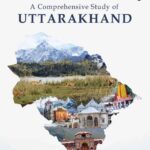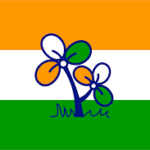West Bengal: 7 Fascinating Insights into Its Rich Heritage and Modern-Day Importance
Introduction
West Bengal, located in the eastern part of India, is a state that has made significant contributions to India’s cultural, historical, and social fabric. Famous for its rich traditions in art, literature, and music, West Bengal also plays a pivotal role in India’s political and economic spheres. From the bustling streets of Kolkata (formerly Calcutta) to the serene beauty of Sundarbans, West Bengal is a vibrant blend of the old and new. In this article, we delve into the history, daily life, importance, and impact of this remarkable state.
History of West Bengal
West Bengal’s history is deeply rooted in its cultural and political evolution. The state’s history spans thousands of years, marked by the rise and fall of empires, colonization, and independence struggles.
- Ancient Origins: West Bengal’s history dates back to the Maurya and Gupta empires, where the region played an important role in ancient India. The Bengal region was known for its prosperous trade routes, rich agricultural land, and vibrant culture.
- Colonial Era: In the 18th century, West Bengal became the center of British colonial activity in India. Kolkata served as the British capital of India until 1911. The state witnessed the rise of important leaders like Rabindranath Tagore, Subhas Chandra Bose, and Swami Vivekananda, who contributed significantly to the Indian independence movement.
- Post-Independence: After India gained independence in 1947, West Bengal became part of the newly formed Indian Union. The state has experienced both political and economic shifts, with periods of left-wing and right-wing governance, as well as significant socio-economic reforms.
- Formation of West Bengal: The state of West Bengal was formed on Bengali New Year’s Day in 1947, following the partition of Bengal into East Bengal (now Bangladesh) and West Bengal. The migration of people between the newly formed countries shaped the state’s social landscape.
Daily Life
It’s daily life reflects its dynamic blend of tradition and modernity. From rural villages to the urban centers, the state offers a unique experience of local customs, traditions, and progressive developments.
- Agriculture: It is one of India’s leading agricultural states, producing rice, jute, and a variety of vegetables and fruits. Rural life is characterized by farming, and many people rely on agriculture for their livelihoods.
- Culture and Traditions: The people of West Bengal are known for their deep appreciation of arts and literature. The state is home to a variety of classical dance forms, Bengali literature, and theater. Music is a significant part of daily life, with Bengali folk songs, Rabindra Sangeet (songs written by Rabindranath Tagore), and classical music dominating the cultural landscape.
- Cuisine: Bengali cuisine is one of the most celebrated aspects of the state. Known for its use of mustard oil, fish, rice, and sweets, the cuisine includes delicacies like machher jhol (fish curry), shorshe ilish (hilsa fish in mustard), and rosogolla and mishti doi (sweetened yogurt).
- Urban Life in Kolkata: Kolkata, the capital city, is a hub of commerce, education, and culture. The city is known for its colonial architecture, bustling markets, temples, and vibrant street life. Public transport, including trams and taxis, plays a major role in the daily life of people.
- Festivals: It is known for its elaborate and colorful festivals. The most prominent is Durga Puja, a grand celebration honoring the goddess Durga, which brings the entire state together in a spirit of joy and devotion.
Key Facts
- Capital: Kolkata, previously known as Calcutta, is the capital and the largest city of West Bengal. It is often referred to as the “City of Joy” for its vibrant cultural and intellectual heritage.
- Famous Tourist Destinations: The state is home to some of India’s most well-known tourist attractions, including the Sundarbans, Darjeeling, Kolkata, Kalimpong, and the Victoria Memorial.
- Literary Legacy: West Bengal has produced many celebrated writers and poets, including Rabindranath Tagore, the first non-European Nobel Laureate in Literature, and Kazi Nazrul Islam, the national poet of Bangladesh.
- Climate: West Bengal experiences a tropical climate, with hot and humid summers, a monsoon season from June to September, and mild winters.
- Languages: Bengali is the official language, spoken by the majority of the population. Hindi, English, and several regional dialects are also spoken.
- Population: As one of India’s most populous states, West Bengal has a population of over 90 million people.
- Economy: The state’s economy is driven by sectors such as agriculture, manufacturing, services, and tourism. Kolkata serves as the major economic and business hub of the region.
Observance and Celebrations
It is known for its grand festivals, each carrying its own cultural significance. These celebrations bring people together in joyous observance of tradition and faith.
- Durga Puja: This is the most important festival in West Bengal, celebrated with immense devotion and grandeur. Temples, streets, and homes are decorated, and elaborate pandals (temporary shrines) are set up. Durga Puja involves music, dance, performances, and community gatherings.
- Poila Boishakh (Bengali New Year): This festival marks the start of the Bengali calendar year. People celebrate by wearing new clothes, sharing traditional sweets, and performing rituals for prosperity.
- Kali Puja: Dedicated to the goddess Kali, this festival is celebrated with fervor in Kolkata and other parts of the state. People observe it through rituals, offerings, and night-long prayers.
- Makar Sankranti: A harvest festival celebrated with kite flying and fairs. People prepare tilkut (sesame sweets) to mark the occasion.
- Eid: Given the significant Muslim population, Eid is also celebrated with enthusiasm, with people offering prayers and sharing meals with family and friends.
Significance in Society
It plays a crucial role in the fabric of Indian society through its cultural, economic, and political contributions.
- Cultural Heritage: West Bengal is the birthplace of countless artists, poets, and intellectuals who have shaped Indian literature, music, and philosophy. The state’s emphasis on education, art, and cultural preservation has left a lasting impact on the nation.
- Political Influence: West Bengal has historically been a politically active state. The Bengali Renaissance, the Indian independence movement, and the evolution of Marxist politics in the state have all contributed to its importance in national politics.
- Economic Role: As one of India’s leading industrial and agricultural states, West Bengal has a significant impact on the country’s economy. The state is a major player in jute production, coal mining, and engineering industries.
- Environmental Significance: West Bengal is home to the Sundarbans, the largest mangrove forest in the world and a UNESCO World Heritage site. This ecological marvel plays a vital role in protecting coastal areas and supporting diverse wildlife.
Wishing West Bengal
On the occasion of West Bengal’s cultural and societal milestones, we wish this vibrant state continued prosperity. May its people continue to embrace their rich heritage while driving innovation, growth, and unity for the future. West Bengal’s contributions to literature, art, music, and society will always remain a beacon of India’s diversity and resilience.
FAQs
- What is the capital of West Bengal? The capital of West Bengal is Kolkata.
- What are the major tourist attractions in West Bengal? Sundarbans, Darjeeling, Victoria Memorial, and Kalimpong are some of the state’s top tourist destinations.
- Why is West Bengal culturally significant? The state has a rich cultural legacy in literature, art, theater, and music, with notable figures like Rabindranath Tagore and Kazi Nazrul Islam hailing from the state.
- What are the popular festivals of West Bengal? The most popular festivals include Durga Puja, Poila Boishakh, Kali Puja, and Makar Sankranti.
- What languages are spoken in West Bengal? The official language is Bengali, with Hindi, English, and various dialects also spoken.
West Bengal continues to be a dynamic and essential part of India’s heritage, culture, and society. Its contributions to literature, politics, arts, and the economy continue to shape the country’s evolution.










